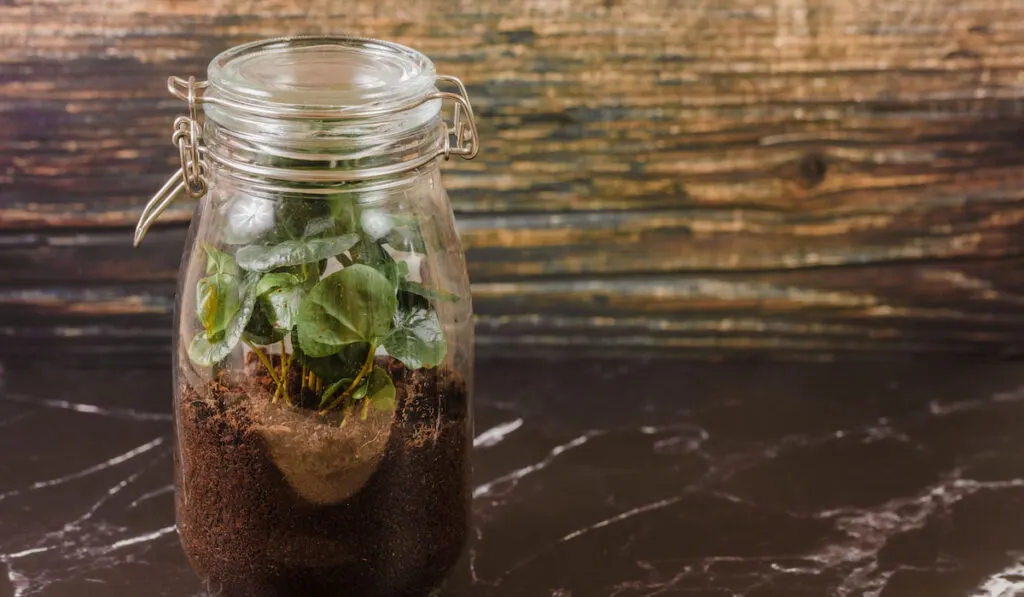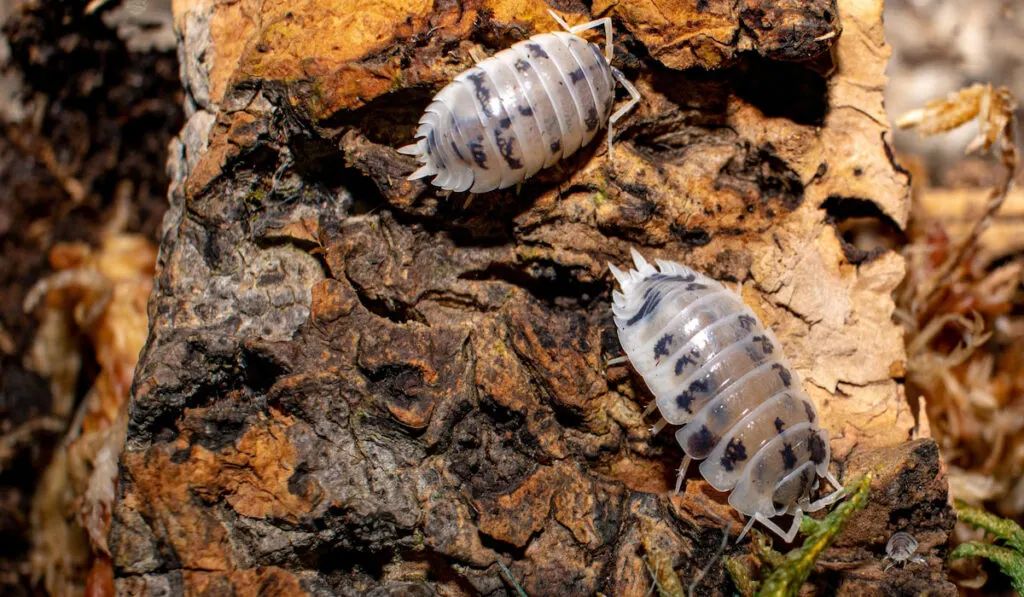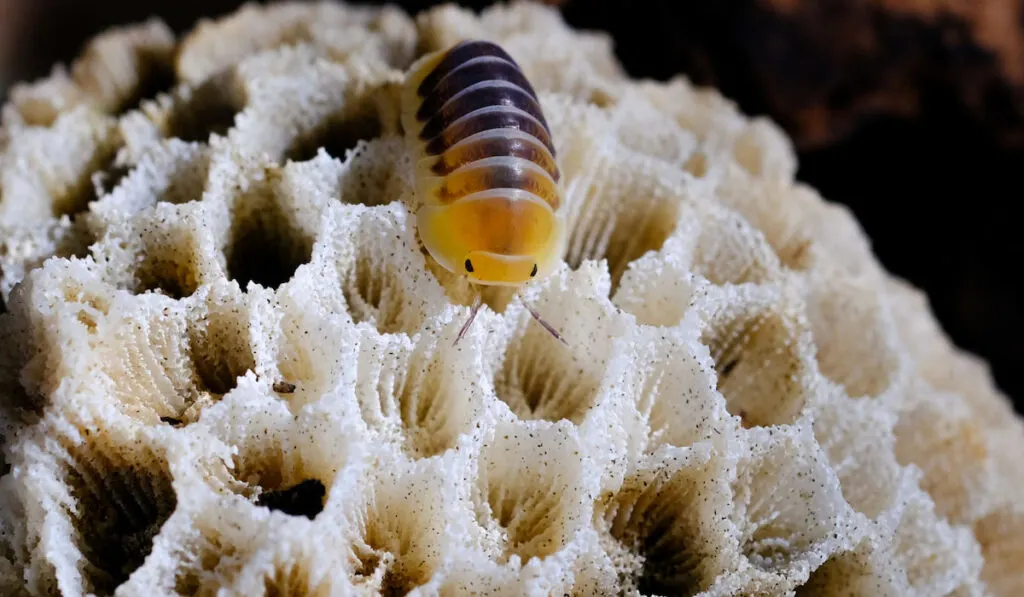Pet owners love adding isopods to aquariums and other enclosures because they do a great job of keeping things clean and adding to the biodiversity.
Whether you’re housing turtles, lizards, or other exotic pets, having isopods in the enclosure means more nutrients for the plant life inside.
But can isopods climb glass?
If you’re using a glass aquarium, you shouldn’t be too worried. Isopods have a tough time climbing smooth surfaces, including plastic and glass. You should be safe if there are a couple of inches between any grass, dirt, or rocks and the top of your aquarium.

If you’re new to isopods, learning how to keep them inside and working their magic will help you have more success with your enclosure.
Here’s some helpful information on isopods and what you can do to make them comfortable inside without escaping.

Table of Contents
Why Keep Isopods?
Isopods are often referred to as the terrarium’s cleanup crew.
Isopods range around your enclosure, dropping waste and aerating the soil. Often, you can find them burrowed underneath layers of dirt working their magic.
All of the efforts they put in each day ultimately mean better nutrients and soil for the plant life.
As any terrarium owner knows, an enclosure full of healthy, green plant life is always a major bonus.
Isopods also do great work eliminating moss and other growth that threatens to take over. All you have to do is make sure they always have something to eat.
Dropping leaves and other plant material in your enclosure will keep your isopods happy and busy all day.
Isopods are a terrific solution for people and pet owners struggling to keep plants alive. Adding them into your environment means you won’t have to switch out plants often.
Soon, you’ll start seeing more impressive growth in your terrarium.
Surfaces Isopods Can Climb
When you introduce isopods into your enclosure, you’ll quickly find that they love to explore.
Isopods have a way of getting all over the place.
They’ll find a way onto any obstacle you put in front of them. If their legs can hold on, they’ll find a way to check things out, up, and over on the other side.
Here are some surfaces you may be surprised to learn isopods will have no trouble climbing.

Silicone Seams
Remember those little seams on the corner of your old aquarium that hold the panes of glass together? Well, tiny isopod feet can easily grab ahold of those silicone seams and make their way up.
The presence of silicone joints in a glass terrarium is one of the main reasons many isopod owners choose plastic terrariums instead of glass.
Still, if you want a glass container, you’ve got to ensure that the small joints are barely noticeable to keep your isopods from getting out.
If you want a glass container, then all you have to do is make sure to cut out the silicone at least a couple of inches from the top. Even if your isopods climb up, they won’t reach the top of the enclosure.
Grass

Isopods love climbing grass to look for things to eat.
You’ll be surprised at how deftly an isopod can climb on a single blade of a small grass plant. So that’s something to keep in mind if you’ve got tall grass or plants at or near the enclosure top.
Sticks and Rocks
Terrarium owners love to put rocks and sticks inside their enclosures to make things look more natural. They look great and are easy to find outside, but they give the isopods something to climb.
When you have rocks or twigs inside, the isopods will feel inclined to climb up and explore. Again, keep in mind how high they go to avoid any escapes.

How to Keep Your Isopods in Their Enclosure
Opt for Smooth Surfaces to Keep Isopods Inside
If you’ve got an old aquarium lying around and think you can raise isopods inside, give it a try! Unless you have large plastic silicone joints, the smooth glass should be enough to keep them from getting out.
What you’ll soon discover, however, is that the isopods will be eager to climb everywhere.
People raising cultures of isopods typically have trouble stopping them from climbing. Rather quickly, they discover that smooth, seamless surfaces work best.
Some owners start their cultures in Ziploc bags so the isopods have absolutely nothing to cling to that would help them to escape.
Another fail-safe option is keeping your isopods in a plastic tub.
Use something like a tub you’d use for home storage or keeping shoes in at the door. The smooth surface and the lack of seams make it virtually impossible for them to climb.
You can skip the lid with a plastic container, which will help with the airflow. Not having a lid also makes it easy to move things around and make changes to your terrarium.
Of course, skipping the lid is a big no-no if you’ve got kids or pets. One false move, and you’re dealing with isopods scattered all over the floor.
Keep the Bottom of Your Enclosure Moist

Many isopod owners can’t believe the prolific climbers the creatures are.
We don’t see them climbing on trees or walls all that much in the wild. So what turns them into tiny mountain climbers once they’re in an enclosure?
One of the main issues with isopods is that they’re always looking for the best possible spot.
For isopods, cool, moist places with plenty of food are where they want to be.
So if you fail to maintain ideal conditions in their enclosure, you can count on your isopods venturing out looking for something better.
However, adding enough water and shade and ensuring they have enough to eat will help discourage the isopods from climbing.
The right conditions could stop them from trying to climb your glass aquarium’s silicone joints, but probably not. Eventually, the isopods will start venturing out and make their way up and out.
You can try to keep them in by using the aquarium lid, but these tiny guys have a way of finding their way out if they have something to grab.
Instead, you may want to find an affordable plastic tub for your isopods to avoid the issues altogether. The plastic sides offer no grip, as long as no grass or twigs or anything gives them a chance to get near the top.
Thankfully, isopods aren’t known for being terrific jumpers, so as long as there are a couple of inches between where they are and the top of the enclosure, you should be good.
Start Small

With isopods, starting small is always a good idea.
If you buy too many at once, and they escape, you’ll be hunting them down in your house or apartment for weeks. You’ll find them in the most unlikely of places.
Start small and ensure you have things set up correctly in your enclosure to succeed. They’ll live inside happily if you keep giving them leaves and other things to play with.
You can sit back and watch them work their magic as they move around in the soil and create the ideal conditions for your plant life inside.
